10 Foods That Help Reduce Knee and Back Pain

Alpa Momaya
July 13, 2022

Alpa Momaya
July 13, 2022
“True prevention is not waiting for bad things to happen, it’s preventing things from happening in the first place.” – Don McPherson
As we advance in our lives, the frequency and intensity of keeping oneself fit go down drastically. The sedentary nature of our lifestyles results in multiple health-related issues, including pain in the knee and back regions of our bodies.
Knee or back pain can arise due to an injury, incorrect posture, lack of exercise, or even a sudden jerk. It can last for a day or even prolong for an extended period. Although ensuring a proper fitness regime to keep the bones and joints in good shape is evident, there is another way to enhance the body’s strength and longevity.
The food we eat plays an exceptional role in ensuring the well-being of each body part – including knee joints and back. Food intake also determines how our body can sustain injuries and prevent any sort of chronic knee and back pains. In fact, it is equivalent to medicine which, if consumed properly, will help anyone suffering from knee and back pain to get faster relief.
This article will tell you about ten foods that have a proven efficacy towards reducing knee and back pain. These foods have been selected based on their anti-inflammatory and healing properties.
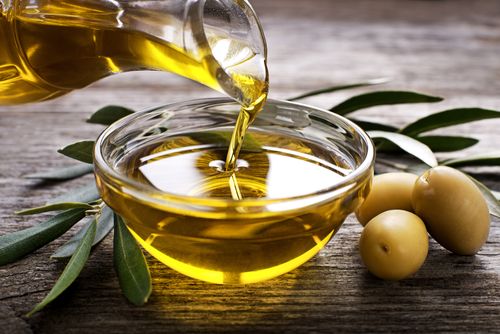
Extra virgin olive oil has properties that can reduce inflammation and help with joint and back pain. Oleocanthal, which is found in olive oil, can have similar effects as non-steroidal anti-inflammatory drugs like ibuprofen or aspirin.
Remember not to heat olive oil to high temperatures (about 410 degrees), because this kills some of the beneficial properties. At lower temperatures, you can sauté vegetables and reap the benefits of switching out butter for olive oil. You can also use it in salad dressings, as a dip for bread, or for tossing pasta or veggies.
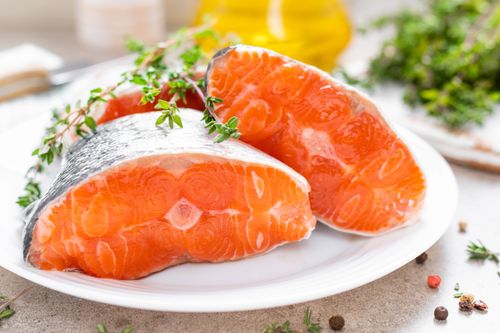
Fatty fish such as salmon, trout, tuna, and sardine are rich sources of omega-3 fatty acids. While their anti-inflammatory properties keep the body metrics in check, the unsaturated fats also reduce joint pains and stiffness in the body. Fish is also an excellent source of Vitamin D, an essential nutrient whose deficiency can aggravate knee and back pain and even cause arthritis.
For those who do not prefer eating fish regularly, can still benefit from Omega-3 nutrients by consuming supplements made of fish oil.
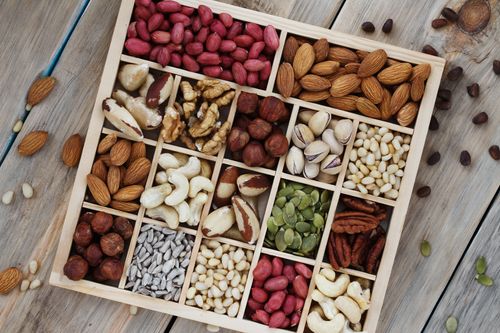
Another vital source of Omega-3 fatty acids are raw nuts and seeds such as almonds, walnuts, chia seeds and flax seeds. Regular intake of these nuts (i.e., a handful each day) reduces inflammation and repairs the aggravated tissues.
Consumption of nuts also strengthens the bones in the long term, thus reducing the chances of contracting any injury to the knee or the back region.

Leafy greens and cruciferous vegetables such as Broccoli, Cauliflower, Cabbage, and Spinach should be a part of everyone’s diet plan. These contain vitamins A, C, and K, which are antioxidants known to relieve inflammation. They also offer another benefit–a natural compound called sulforaphane, which blocks an enzyme that causes joint pain and inflammation.
Green leafy vegetables are fibrous and play an essential role in maintaining your body’s overall well-being.
Root vegetables such as carrots, beets and pumpkin are rich in beta carotene, a powerful antioxidant. Adding them can work wonders in reducing knee and back pain. Consume carrots as a part of your salad intake regularly.
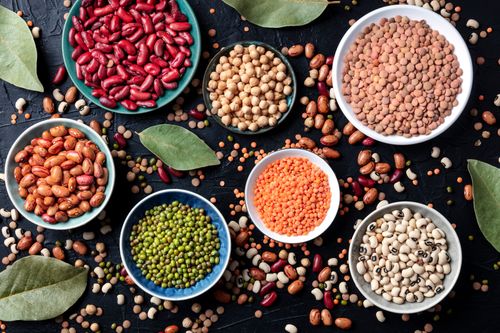
Pulses, such as lentils, beans, and chickpeas are a rich source of protein, minerals, flavonoids, and fibers. Not only do they help in providing strength to the body, but their anti-inflammatory and regenerative properties also reduce knee and back pain to a large extent and heal the tissues faster.
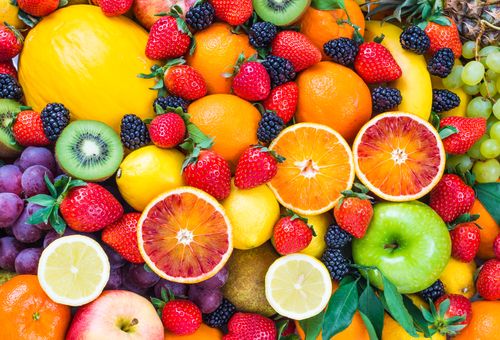
Fruits, especially the juicy variants, should be an essential component of your diet plan for reducing knee and back pain.
Apples, pineapple, berries, cherries, grapes, and citrus fruits (lemon, oranges) are composed of flavonoids and antioxidants. These plant compounds work in tandem to ease inflammations caused by knee and back pain. Consume the skin of the fruit to derive maximum benefits.
Regular consumption of tomatoes (yes, it is a fruit!) is also recommended as they contain lycopene, a highly potent antioxidant. It prevents ligament cells from any perennial damage while repairing the inflamed tissues faster.

Green tea or herbal tea is often recommended for people suffering from chronic back or knee pain as a non-invasive treatment. Green tea is rich in flavonoids, which reduce inflammation in affected areas to a great extent.
Green tea also helps improve our immune response, thus reducing the chances of tissue or cartilage ruptures. Because of its non-inflammatory properties, you can consume one or two cups of green tea daily.
Green tea is beneficial for maintaining your body’s overall health and wellness.
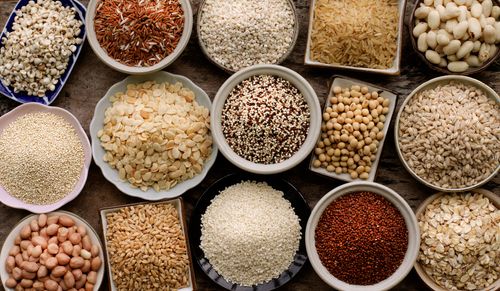
Avoid refined grains, such as white flour and white rice, as they are devoid of the essential nutrition and fibers. Instead, opt for whole grains like wheat, brown rice, millet, quinoa, barley, oats, etc. These whole grains are extremely rich in essential minerals and fibers. The fibers produce short chained fatty acids upon digestion, which helps in curbing the inflammation to a large extent.
Regular inclusion of these high-fiber whole grains in your diet plan will reduce knee and back pain.

Ginger, garlic, and turmeric are spices popular for their medicinal properties. However, very few people are aware of their intrinsic characteristics of treating knee and back pain.
Turmeric contains the compound curcumin, which is an effective cure for any joint-related pains. Ginger and garlic have also showcased anti-inflammatory properties, which can even cure severe arthritis or joint pains.
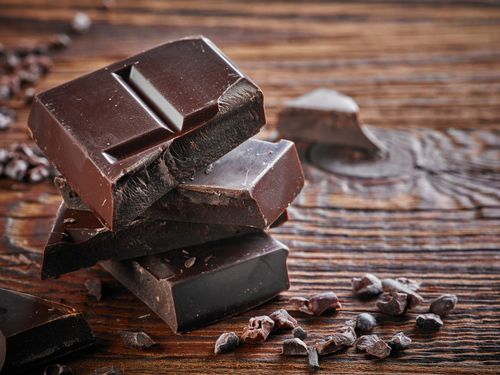
At last, there’s something that got your tastebuds rolling, right? Few studies show that dark chocolate may help alleviate knee and back pain, although large-scale research is yet to confirm the findings. Empirical results suggest that the higher the percentage of cocoa in dark chocolate, the higher is their anti-inflammatory response.
Choose high cocoa percent dark chocolate to reap the benefits. High sugar and fat containing chocolates will nullify the effects as well as pose other health risks.
Now that we have talked about the ten foods that help reduce knee and back pain, we will also list out a sample plan that incorporates these food options in your daily diet.
As you can see, incorporating these foods into your daily diet is quite easy and does not require any significant overhaul of your existing routine.
A. Ensure that the food you consume is wholesome and nutritious. It should comprise antioxidants, fatty acids (Omega-3), proteins, minerals, and fibers for alleviating pain.
A. Avoid foods rich in sugar (cakes, pastries, sweets, etc.) to as much extent as possible as they can trigger severe inflammation of aggrieved areas. Also, avoid consuming caffeinated beverages and alcohol as they reduce Vitamin D absorption, further aggravating the pain and hampering the healing process.
A. Try to limit the intake of food prepared in commercial establishments, as it is usually devoid of nutritional benefits. Instead, prefer freshly prepared home-cooked meals that pack all the essential nutrients.
A. If you are suffering from knee and back pain, it is essential to take proper care of the affected area. Maintain a comfortable yet proper posture to rest. Ensure frequent mobility to avoid stiffness of the back or knee joints. For knee pain, follow proper compression techniques for interim relief.
A. While proper food consumption aids in reducing knee and back pain to a large extent, you should consult a medical practitioner in case of prolonged issues.


Amazing post. love all your post goodluck cheers.keep uploading more !
I want to loose weight faster. I am not exercising. Largely, depending on diet by this app.